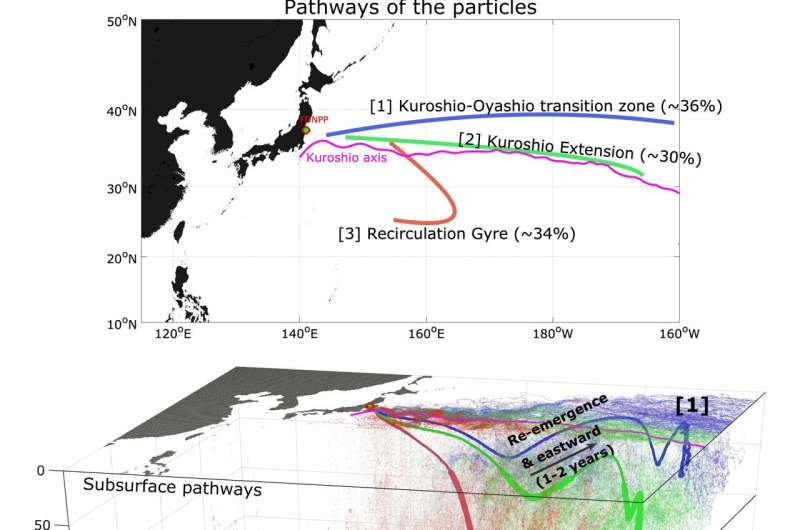
Fukushima fallout transport longevity revealed by North Pacific ocean circulation patterns
Posted: 29th March 2024
by Hannah Bird , Phys.org

Schematic diagram of the modeled trajectories of computationally-released radiocaesium particles, which can be split into three pattern clusters: transport along the Kuroshio-Oyashio current transition zone (a,d), the Kuroshio Extension (b, e) and the North Atlantic subtropical mode water recirculation gyre (c, f). Credit: Kim et al. 2024.
Fukushima is now notorious for the nuclear disaster that took place in March 2011, the second worst of its kind after the Chernobyl catastrophe of 1986. An earthquake-triggered tsunami off the Japanese coast damaged backup generators at the Fukushima nuclear plant, leading to failure of the reactors’ cooling systems. The residual heat partially melted a number of the fuel rods in three reactors, causing the release of nuclear radiation. A series of explosions further damaged containment buildings and released additional radiation to the surrounding area, leading to a 30 km radius of evacuation.